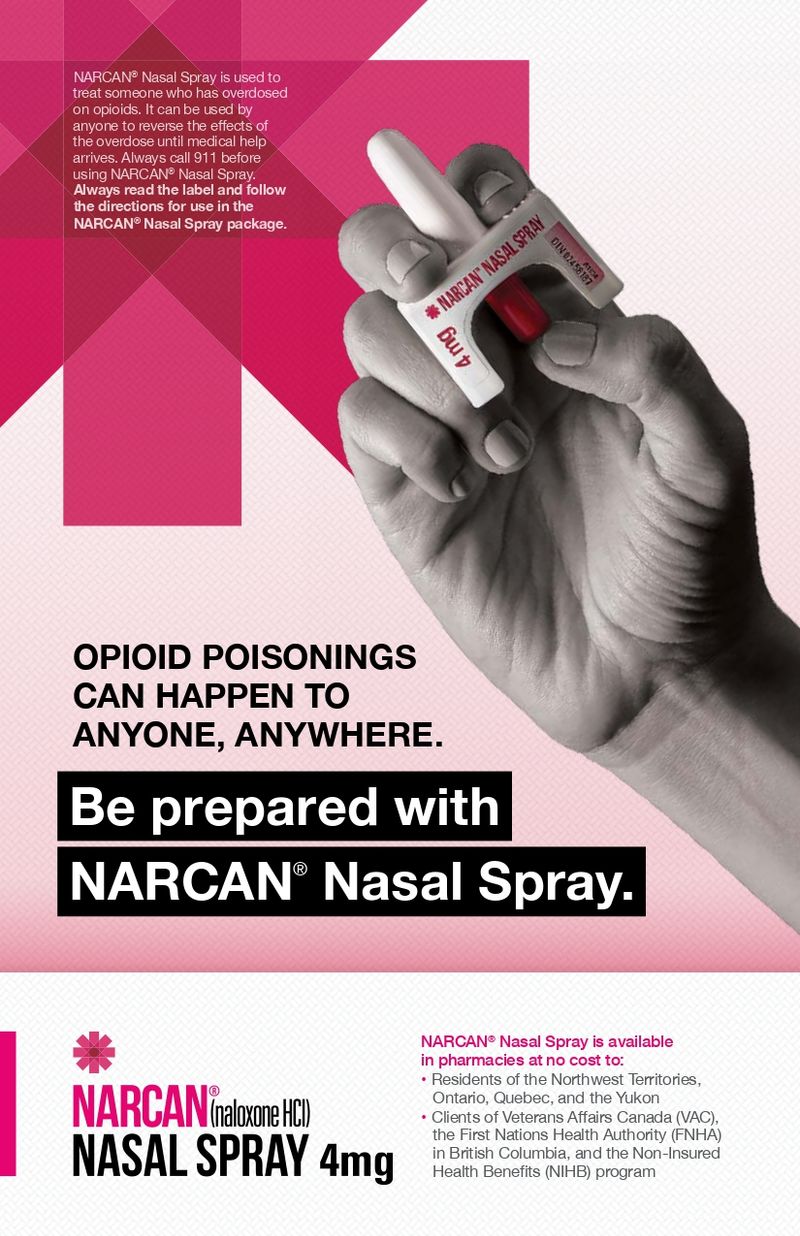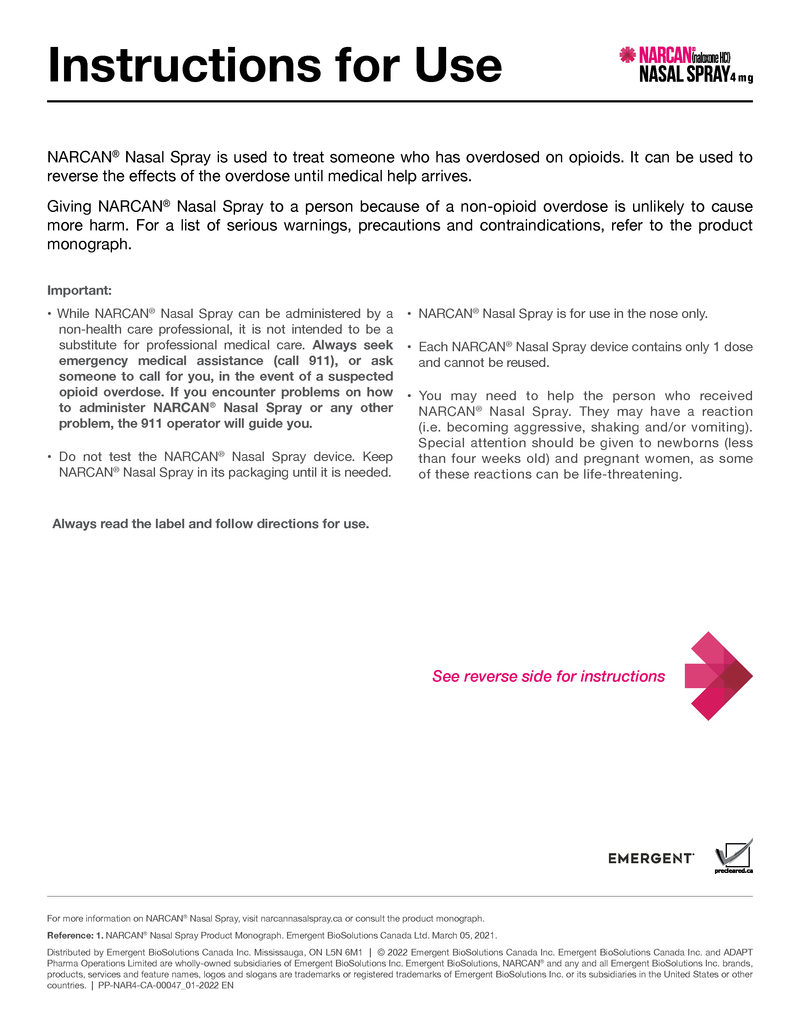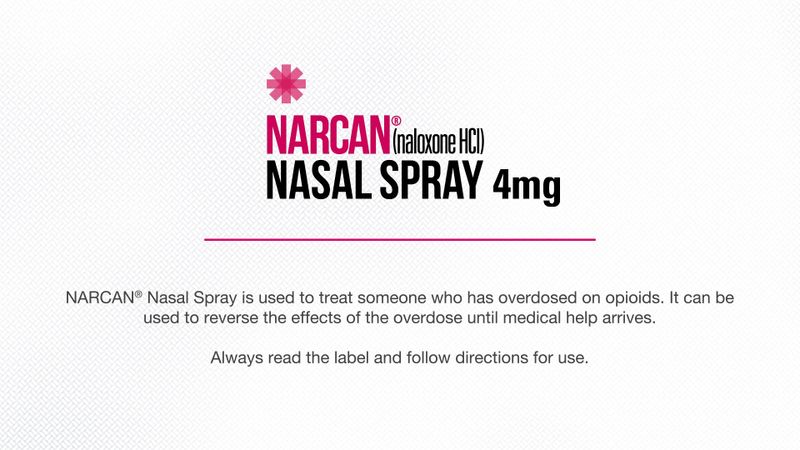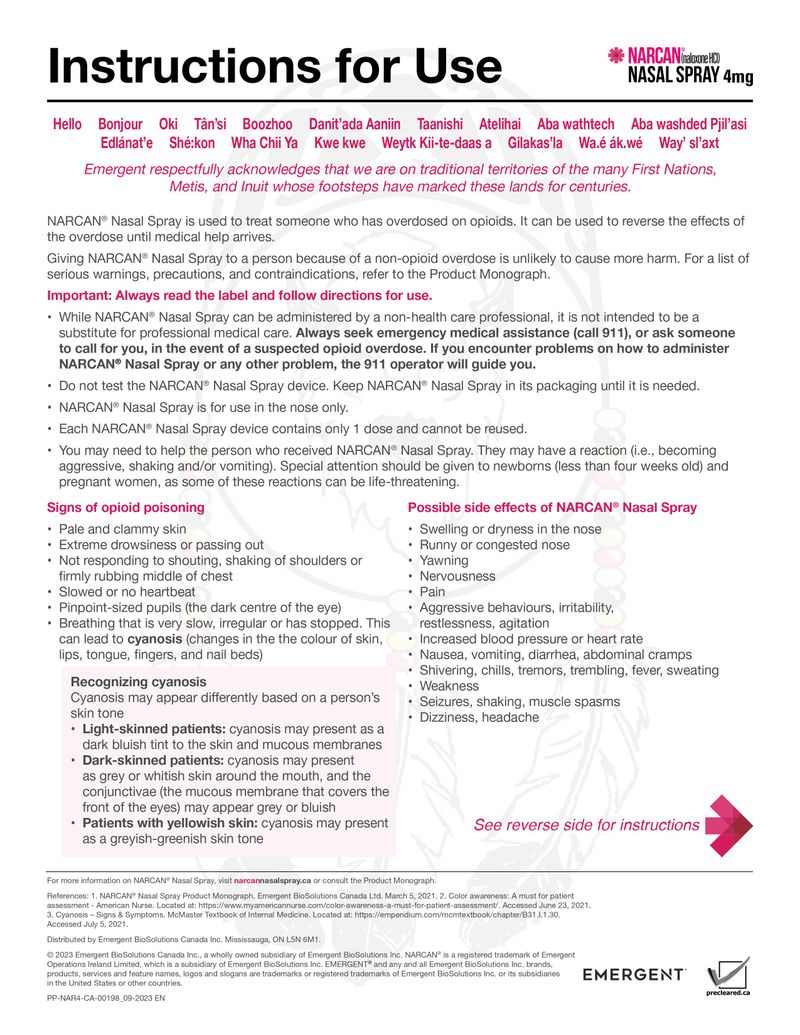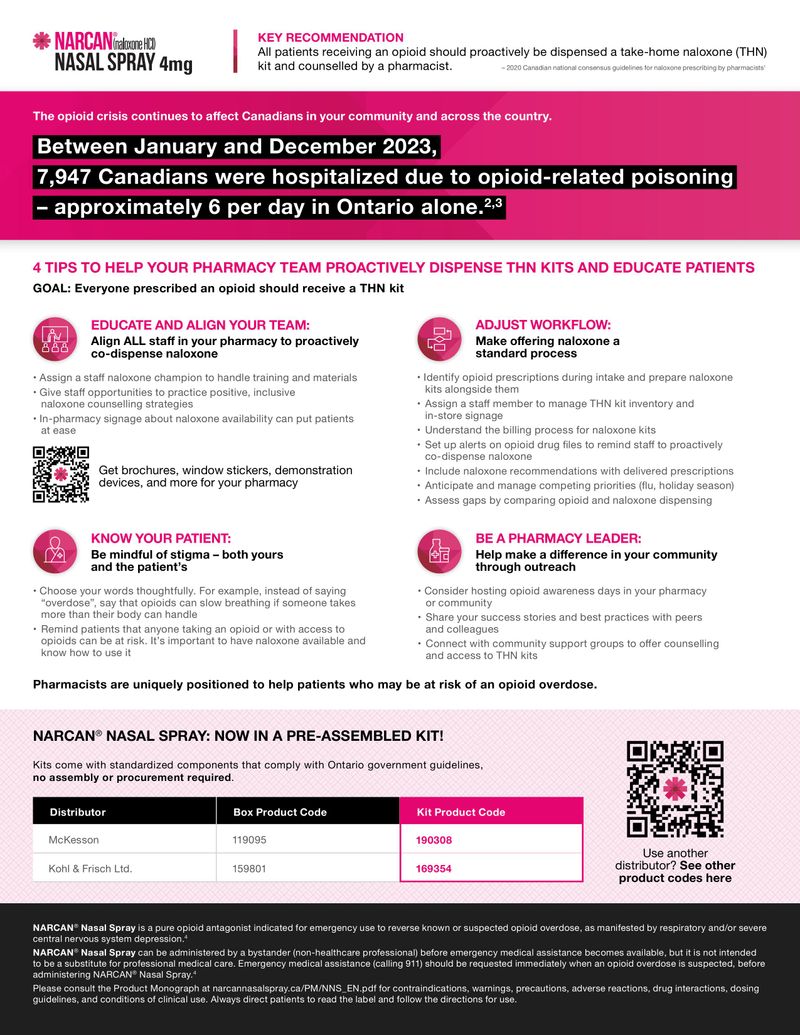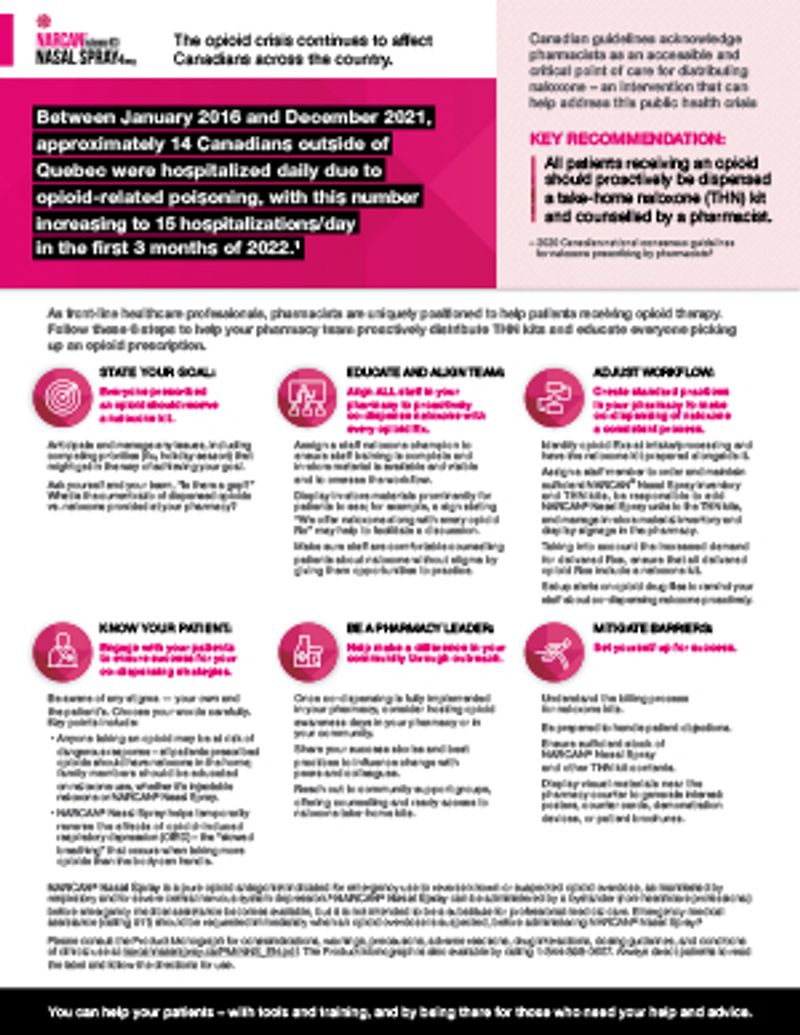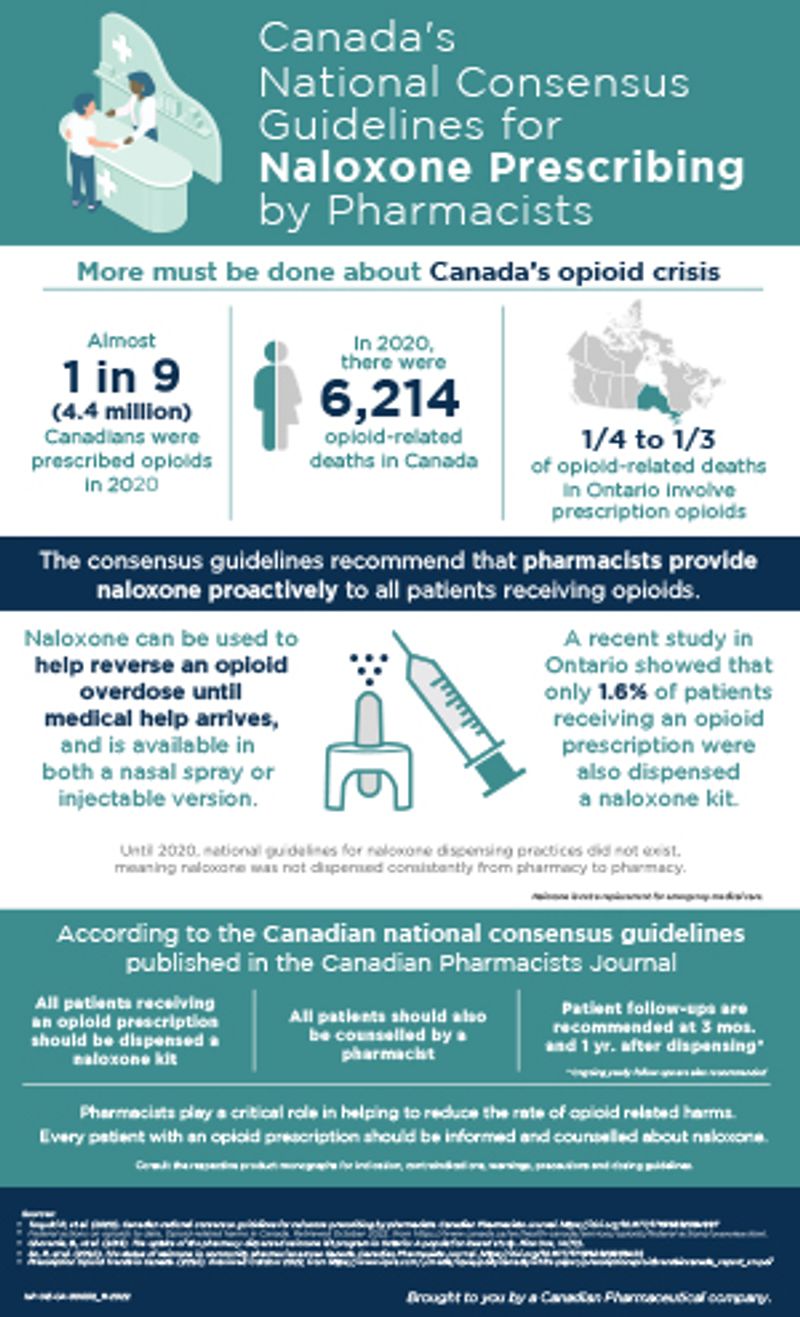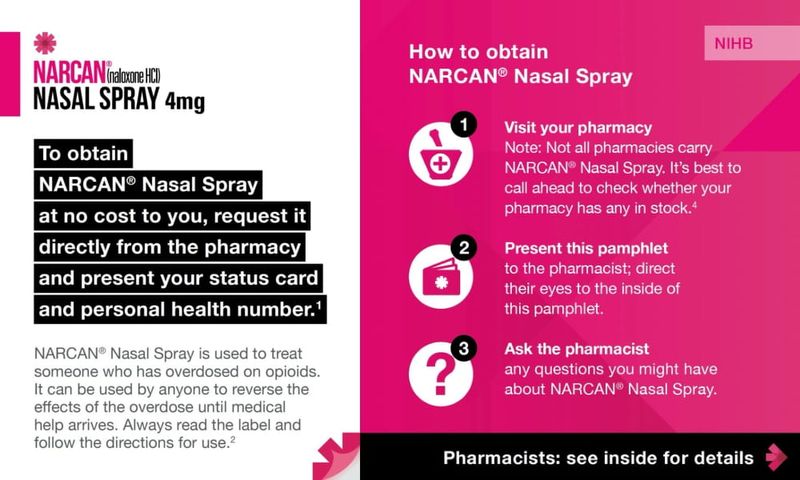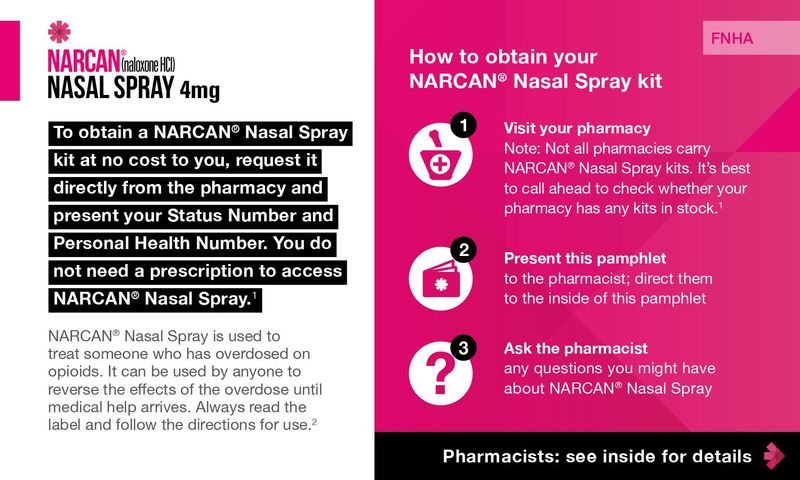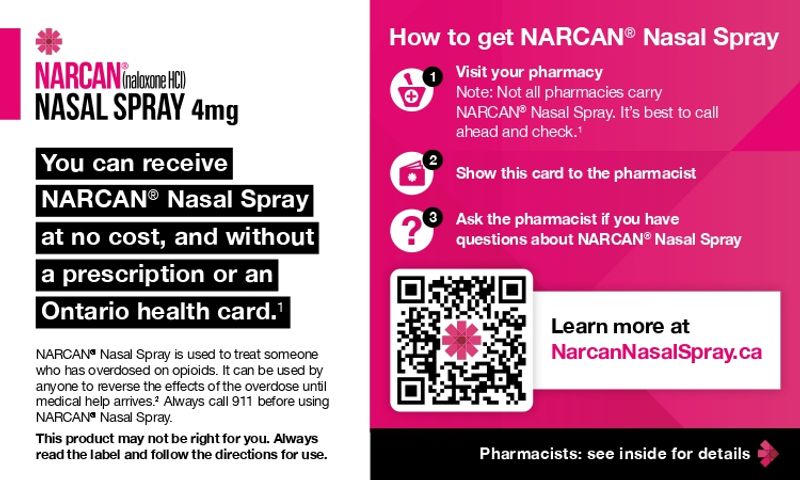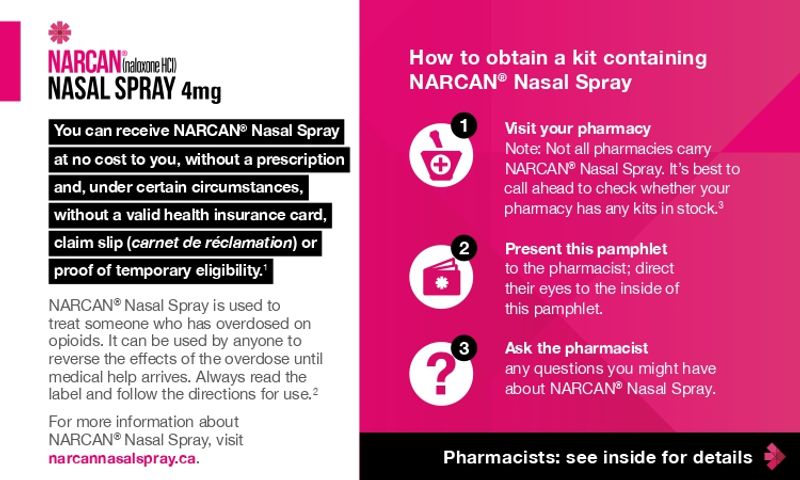
Canadian pharmacists are at the forefront of the ongoing opioid crisis. As the most accessible healthcare professionals in Canada, you can provide counselling to patients regarding appropriate use of opioids, as well as regular support and follow-ups.1 By acknowledging the social stigma associated with opioid use, and giving patients a positive experience at the pharmacy, you can help make a real difference. Some patients may not feel comfortable discussing their opioid prescription with their pharmacist, but you are uniquely poised to educate them and help make their experience a positive one.2 This could, in turn, make them more receptive to receiving NARCAN® Nasal Spray.
Potential biases at the pharmacy
People who need to fill opioid prescriptions may be afraid that the pharmacy staff will “look at them funny”, or judge them because of their medical history.3,4 In fact, a study conducted in British Columbia and Quebec in 2019 showed that some patients living with chronic non-cancer pain occasionally experienced situations of discrimination and stigma associated with their opioid prescriptions; some even felt that their healthcare providers labelled them as “drug-seeking” individuals.5
The stigma associated with prescription opioids can also be observed through publicly funded programs for reversal medications, such as naloxone.4 While the availability and use of take-home naloxone kits has increased recently, patients may feel that requesting a kit at the pharmacy, for example, is associated with addiction and problematic drug use.4 It’s worth noting that many of these situations seem to happen when patients are interacting with healthcare providers that are not familiar with their cases.5
It’s in your hands
As a pharmacist, you may have seen the impact of the opioid crisis firsthand. By proactively talking to your patients about opioid overdose reversal agents like NARCAN® Nasal Spray, you can help make pharmacies judgment-free zones.
References: 1. Canadian Pharmacy Association. Pharmacy in Canada. Available at: http://www.pharmacists.ca/cpha-ca/assets/File/pharmacy-in-canada/Pharmacy%20in%20Canada.pdf(Open in a new window). Accessed July 27, 2021. 2. Tsuyuki R et al. Canadian national consensus guidelines for naloxone prescribing by pharmacists. Canadian Pharmacists Journal. 2020;153(6):347-351. 3. College of Pharmacists of British Columbia. A Message from Our Board Chair: Understanding How Stigma Can Impact Patient Care. March 23, 2018. Available at: https://www.bcpharmacists.org/readlinks/message-our-board-chair-understanding-how-stigma-can-impact-patient-care(Open in a new window). Accessed July 27, 2021. 4. Antoniou T, Pritlove C, Shearer D, et al. A qualitative study of a publicly funded pharmacy-dispensed naloxone program. International Journal of Drug Policy. 2021;92:103146. 5. Dassieu L, Heino A, Develay É, et al. “They think you’re trying to get the drug”: Qualitative investigation of chronic pain patients’ health care experiences during the opioid overdose epidemic in Canada. Canadian Journal of Pain. 2021;5(1):66-80.
PP-NAR4-CA-00087_05-2024 EN











